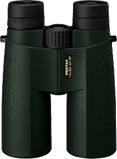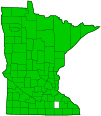Water scavenger beetles
(Tropisternus spp.)
Overview • Description • Distribution • Taxonomy
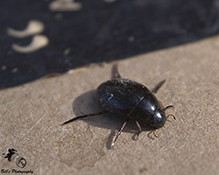
Overview
Tropisternus is a large genus of water scavenger beetles. There are currently 70 recognized Tropisternus species worldwide, all of them in North and South America. There are 15 Tropisternus species that have been reported in North America north of Mexico, and at least 4 species in Minnesota.
Tropisternus beetles are ubiquitous throught the Americas and are tolerant of a wide range of ecological conditions. The vast majority of species are most frequently and abundantly collected in standing water (lentic) environments, including both permanent and semi-permanent ponds, swamps and marshes, and sewage lagoons. They are also found in rain pools and shallow depressions that are seasonally or temporarily filled with water (ephemeral pools). They are even found in mixed fresh water and salt water (brackish) pools. Some species are found in slow-moving water with silty or sandy bottoms (lotic-depositional) environments, including slow streams or stream margins and in shallow areas near the shores of large lakes (littoral zones). One species, Tropisternus lateralis, is one of the first water scavenger beetles to colonize newly formed small bodies of water, including wheelbarrows and buckets partially filled by rain, and even tire track puddles.
Adults feed on algae, animal remains, and other biological material.
Description
Tropisternus are small to medium-sized beetles. Adults are 5⁄16″ to ⅝″ (7 to 15 mm) in length. The body is broadly oval or boat-shaped (navicular) when viewed from above, and strongly convex above while flat below. Most species are dark brown to black and glossy. Some species have a metallic or olive-green sheen, and many have a light-colored border on the lateral margins of the pronotum and the outer margins of the elytra.
The antennae are short and clubbed. The last three antennal segments form a club that fits into a cup-like preceding segment (the cupule). The mouthparts are directed downwards. The finger-like sensory organs attached to the “second jaws” (maxillary palps) are noticeably longer than the antennae.
The upper plate on the first segment of the thorax (pronotum) is at least as wide and often wider than the head. The plates on the underside of the thorax, the mesosternum and metasternum, form a long, continuous, sharp, and acute spine or keel that extends backward between the middle and hind legs, often reaching the abdomen.
The wing covers (elytra) are widest at the middle.
The legs are adapted for swimming. The last part of each leg (tarsus) has five visible segments (a 5-5-5 tarsal formula). On the hind legs, the tarsi are flattened and distinctly fringed with long swimming hairs.
Distribution |
||
|
Sources Biodiversity occurrence data published by: Minnesota Biodiversity Atlas (accessed through the Minnesota Biodiversity Atlas Portal, bellatlas.umn.edu, 10/31/2025). |
|
| 10/31/2025 | ||
Taxonomy
Order
Coleoptera (Beetles)
Suborder
Polyphaga (water, rove, scarab, long-horned, leaf and snout beetles)
Infraorder
Staphyliniformia
Superfamily
Hydrophiloidea (water scavenger and clown beetles)
Family
Hydrophilidae (water scavenger beetles)
Subfamily
Hydrophilinae
Tribe
Hydrophilini
Subordinate Taxa
allied water scavenger beetle (Tropisternus affinis) ![]()
water scavenger beetle (Tropisternus apicipalpis) ![]()
water scavenger beetle (Tropisternus blatchleyi) ![]()
water scavenger beetle (Tropisternus californicus) ![]()
water scavenger beetle (Tropisternus collaris) ![]()
America water scavenger beetle (Tropisternus columbianus) ![]()
hairless water scavenger beetle (Tropisternus glaber) ![]()
![]()
lateral-banded water scavenger beetle (Tropisternus lateralis) ![]()
![]()
water scavenger beetle (Tropisternus mexicanus) ![]()
mixed water scavenger beetle (Tropisternus mixtus) ![]()
![]()
swimming water scavenger beetle (Tropisternus natator) ![]()
![]()
water scavenger beetle (Tropisternus orvus) ![]()
water scavenger beetle (Tropisternus quadristriatus) ![]()
water scavenger beetle (Tropisternus salsamentus) ![]()
water scavenger beetle (Tropisternus sublaevis) ![]()
Synonyms
Cyphostethus
Homostethus
Pristoternus
Strepitornus
Common Names
Though common, this genus has no common name. The common name of the family Hydrophilidae is water scavenger beetles, and it is applied here for convenience.
Glossary
Elytra
The hardened or leathery forewings of beetles used to protect the fragile hindwings, which are used for flying. Singular: elytron.
Maxilla
A paired structure that forms a significant component of the mouth apparatus across various animal phyla. In vertebrates: A major bone of the upper jaw (or the snout) that typically bears teeth. In Arthropods: An accessory appendage behind the mandibles used for manipulating food and often bearing sensory palpi.
Palp
Short for pedipalp. A segmented, finger-like process of an arthropod; one is attached to each maxilla and two are attached to the labium. They function as sense organs in spiders and insects, and as weapons in scorpions. Plural: palpi or palps.
Pronotum
The exoskeletal plate on the upper side of the first segment of the thorax of an insect.
Tarsus
On insects, the last two to five subdivisions of the leg, attached to the tibia; the foot. On spiders, the last segment of the leg. Plural: tarsi.
Visitor Photos
Share your photo of this insect.
This button not working for you?
Simply email us at info@MinnesotaSeasons.com.
Attach one or more photos and, if you like, a caption.
Bill Reynolds |
||
Found the Water Beetle (Tropisternus) just laying out on a piece of cardboard. I left the quote marks in the background for reference. They are only 5/32" tall. |
||
 |
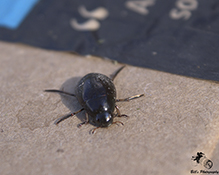 |
|
MinnesotaSeasons.com Photos
|
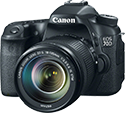
Slideshows
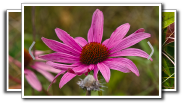
Visitor Videos
Share your video of this insect.
This button not working for you?
Simply email us at info@MinnesotaSeasons.com.
Attach a video, a YouTube link, or a cloud storage link.
Other Videos
Water Scavenger Beetle (Hydrophilidae: Tropisternus lateralis) in Hand
Carl Barrentine

Visitor Sightings
Report a sighting of this insect.
This button not working for you?
Simply email us at info@MinnesotaSeasons.com.
Be sure to include a location.
MinnesotaSeasons.com Sightings
